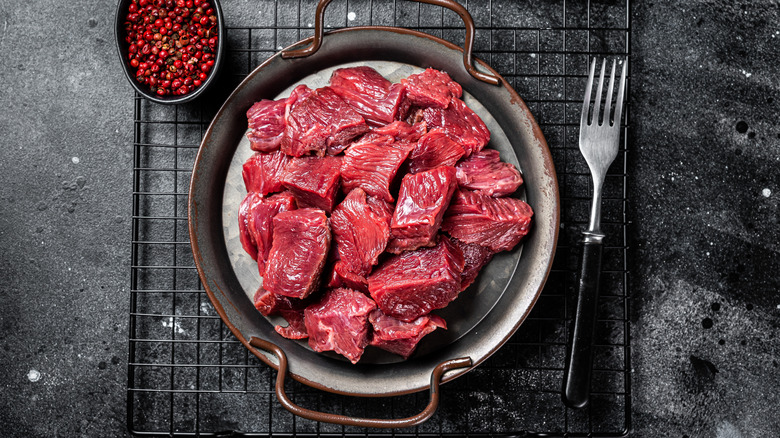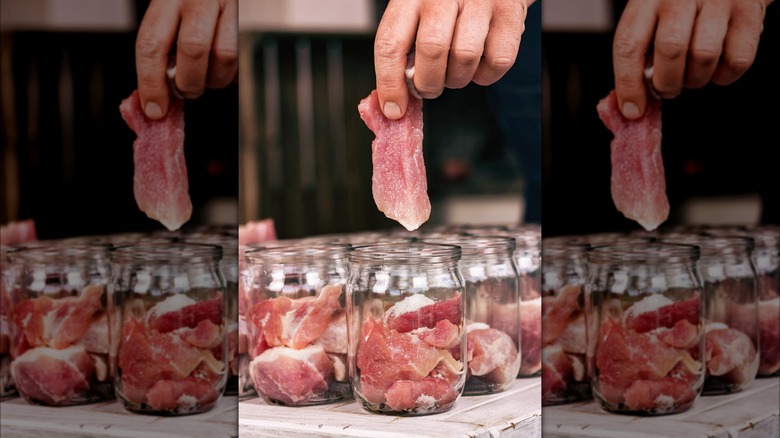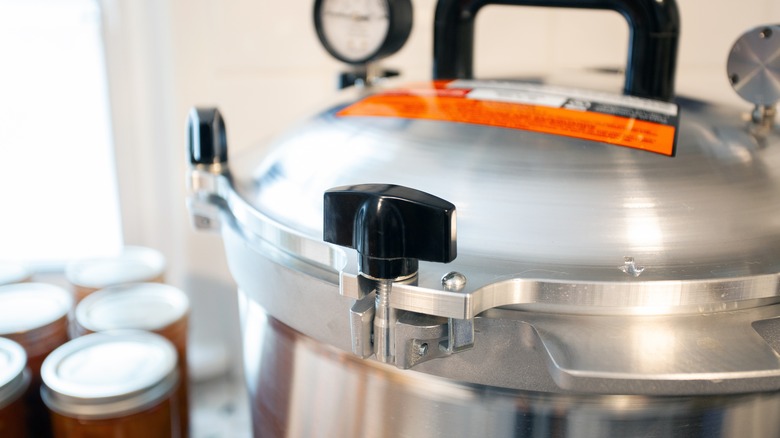Is Preparing Canned Venison Different Than Canning Other Meats?
Most people have seen some iteration of canned meat, particularly within a local grocery aisle. However, these are typically the standard proteins people consume regularly like pork, chicken, beef, fish, and other seafood. Yet, that doesn't mean wild game, such as venison, is a stranger to the canning process. In fact, canning venison can be done similarly to beef, poultry, seafood, or pork, but there are some things to note, mainly that the method is a little different than canning fruits or vegetables.
Although canning foods is a technique that seems to have been around forever, it is actually a relatively current development in the culinary world, with the first recorded canning coming in 1810, by an Englishman named Peter Durand. But, the canning revolution almost had a short run due to an early controversy surrounding canned meat. This is because canning requires specific care when choosing what meat to use and knowing the essential role the proteins' acidity plays.
Can venison like any other meat, but stay cautious
You can use the canning process for venison — just like any other meat — because all proteins of this nature contain low amounts of acid. However, this is a different technique than what is typically used for items like fruits or vegetables. Due to meat's relatively low acidity, it's a breeding ground for a strain of bacteria known as Clostridium botulinum, which causes botulism. As a result, venison is a type of food that should never be canned in boiling water. And the experts, like the Master Food Preservers of Orange County's program director, Colleen Clemens, agree, according to The Washington Post.
Clemens clarifies that only foods with higher acidity levels can be canned in boiling water because the temperature will only reach 212 degrees Fahrenheit. Meat items such as venison, however, must be canned at 240 degrees Fahrenheit — the temperature at which botulism cannot survive, according to the USDA. So, this should clear any risk of severe food poisoning from botulism, and Clemens further illustrates that "you can't achieve a [safe] temperature ... in anything other than a pressure canner."
Why a pressure canner is essential for canning venison
Although most instant pots have a canning feature, it's not recommended to use for canning venison. The National Center for Home Food Preservation explains that it's a size issue because such devices contain "... less metals, are smaller in diameter, and will use less water than pressure canners." This issue creates an unstable temperature range as the pressurized food warms up and cools, which may culminate in unsafe results.
So, once a pressure canner is obtained, several expert sites like the Michigan State University Extension provide details and instructions on the various methods that can be utilized with the instrument. In most cases, although there's another, quicker approach known as the "raw pack method," the agreed-selected process revolves around the "hot pack method" because it maintains total submerging of the product with less introduced air, ensuring the best outcome.
This requires the removal of extra fat and tissue, slightly cooking the meat before packaging, and reincorporating some of the protein's cooking liquids and water into the canning container. Moreover, you have to make sure to reduce the amount of air within the jars by pressing the meat down. Once everything is prepared and sealed correctly, the pressure canner must create and hold a pressure between 11 and 15 pounds for the entire process, depending on your altitude.
The results should improve the normally gamey meat's taste and tenderness. Moreover, canned venison can be stored for up to two years if kept in a dry, cold storage area.


